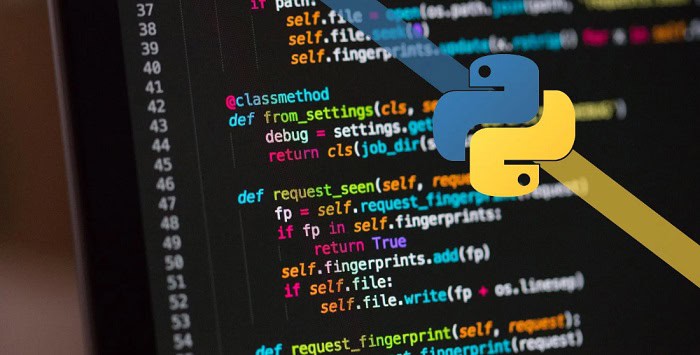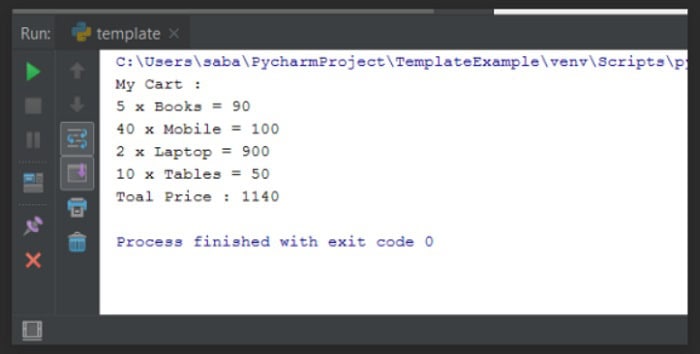Python features effective high-level data structures and an easy-to-use but powerful method for object-oriented programming. Programmers use a unique concept called class to group related objects and implement majority of code in the Python programming language. The template class finds a similar use in Python.

Now narrowing our focus to templates, in general, they are documents that act as a foundation for new ones and are pre-formatted when you open them.
See Also: Working With S3 In Python Using Boto3: A Complete Guide!
Table of Contents
What Are Python Templates?
Python 2.4 saw the introduction of the template class to the string module. A template in Python is a class description that specifies the variables and methods present in the class. Templates define parameters for those classes that can have any data. As a result, you may build adaptable classes and work with various data types, avoiding the need to modify the application.

Python frameworks frequently use the Template Method pattern, and developers use it to give framework users a quick way to add inheritance to basic functionality.
See Also: 10 Best Free Python Books For Programmers
How To Identify A Template Method?
If you notice a method in a base class that calls numerous additional methods, either abstract or empty, that method is probably a template method. Cass’s implementation uses regular expressions to match a broad pattern of acceptable template strings. Two components make up a valid placeholder or template string:
- The $ sign
- A verified Python identity. Any combination of capital and lowercase characters, underscores (_), and numerals 0 to 9 constitutes an identification. An identifier cannot be a Python keyword or include a digit as its first character.
What Are Template Strings Exactly?
Standard Python strings with specific placeholders make up the template string, and the $ sign and a legitimate Python identifier find its use in constructing these placeholders. Once we have a suitable template string, we can add our values to the placeholders to produce a more complex string.
Python’s Template System In Action
- Template class initially uses a string as a template. The template string utilizes a placeholder variable name with the $ symbol within the preceding string. Here, the dollar sign indicates that a placeholder is present. The code employes $$ to represent $ itself.
- By utilizing the dictionary-based substitute () function, it substitutes a value into the Template. The key must match the placeholder name and be found in the dictionary. As a result, the entire Template returns, not just the placeholder.
- According to the convention, we use the placeholder variable name as the variable name in Python.
Basic Example of a Template string in code:

Using The substitute() Method
To conduct string substitution up until now, we’ve been using a Template instance’s substitute() method. Using this technique, the placeholders in a template string are substituted using keyword parameters or mapping with identifier-value pairs.
The IDs used to define the placeholders in the template string must agree with the keyword arguments or identifiers in the mapping. Any Python type that can adequately convert to a string can be used as a value.
The roles of substitution are as follows:
- A substitution placeholder with the name “$identifier” maps the “identifier” mapping key.
- We can conclude the specification of the placeholder by the “$” and the first non-identifier character.
- We use a single $ in place of “$$“, which regards as an escape.
See Also: 10 Best Python Books For Intermediate Programming
Errors In Python Template
These are the two categories of errors in Python:
Key Error: When a placeholder value is missing from a template, No Placeholder Match is displayed.
Value Error: Bad Placeholder appears when the placeholder’s first character is invalid.
Correction Of Template Errors
The Template has a safe subsitute() method to handle these problems while returning a string.
If data is lacking, the safe subsitute() method will leave placeholders alone. If there is a problem, we can include the placeholders in the returned string.
Python Template Class Customization
We can customize and subclass a Python Template class. This enables us to alter the class’s regular expression patterns and other characteristics to suit our requirements. ‘Delimiter‘ is widely used for customization. The class attribute delimiter stores the placeholder’s initial character, and its default value is $, as we have already seen. We can subclass Template and override the delimiter default value because the Python Template class intends for inheritance.
See also: How To Import A Class From Another File In Python?
FAQ’s
What does a template do in Python?
Templates in Python come in use to convert data into strings. We obtain a more flexible interface for string substitution (or string interpolation) using Templates. Python currently provides several methods for substituting strings, including the recently added f-Strings.
Is class in Python a template for an object?
A class is a type of code template use to create objects. Objects made up of member variables that have behavior associated with them. We can define a class using the term class in a programming language like Python. The constructor of the class can be use to generate an object.
How does a template become declared?
A class template must be declared before a corresponding class can be instantiated. Each translation unit can only contain one definition of a class template. Before using a template class that needs the class size or refers to members of the class, a class template must be specified.
What is the purpose of Python classes being templates?
In Python, a template is a String module class. It enables data to be changed without requiring the program to be edited. Subclasses can get use to customizing it. As mentioned in PEP 292, templates allow for easier string replacements.
Where do template classes come into play?
Templates can be use with abstract data types to handle any data. For example, instead of creating a stack class for each datatype you want the stack to function, you might construct a templated stack class that can handle any stack.
How are class templates made?
A class template begins with the keyword template, then template parameter(s) inside >, then the class declaration.
What other names do template classes have?
C++ templates, commonly known as generic functions or classes, are a powerful feature in C++. In C++, the keyword template comes in use for the template syntax, and an angled bracket in a parameter (t) creates the data type variable.
What programming language comes in use for templates?
A template language allows you to reuse the static components that create a webpage's layout while dynamically filling the page with data. HTML is the primary markup language used on the World Wide Web.
Is it possible to utilize a template for a function?
Function templates are unique functions that can work with generic types. This allows us to design a function template with functionality that can be modified to more than one type or class without having to rewrite the full code for each kind. You can get this in C++ by utilizing template parameters.
What is the quickest Python template?
String. The template is the quickest. However, it is so simple that it cannot be termed a template in the same breath as the other templating systems since it merely does string substitutions and lacks conditions and loops, rendering it practically worthless in reality.
Are classes object templates?
A class is an object template. A class defines object attributes such as a valid value range and a default value. The class also specifies the behavior of an item. A member or instance of a class is an object.
How many different kinds of templates are there?
Templates classify into function templates, class templates, and variable templates (as of C++14). Templates can be either variadic or non-variadic since C++11; in previous versions of C++, they were invariably non-variadic.
Conclusion
The Python Template class finds its application in string interpolation or substitution. The class offers a powerful and user-friendly interface and operates with regular expressions. When building intricate string-based templates, it’s a solid alternative to other built-in string substitution methods.
We’ve studied how the Python Template class functions in this article. We also learned to avoid some of the more frequent mistakes we can make when utilizing Template. Finally, we discussed subclassing as a means of personalizing the class.
See Also: Python dictionary to Json